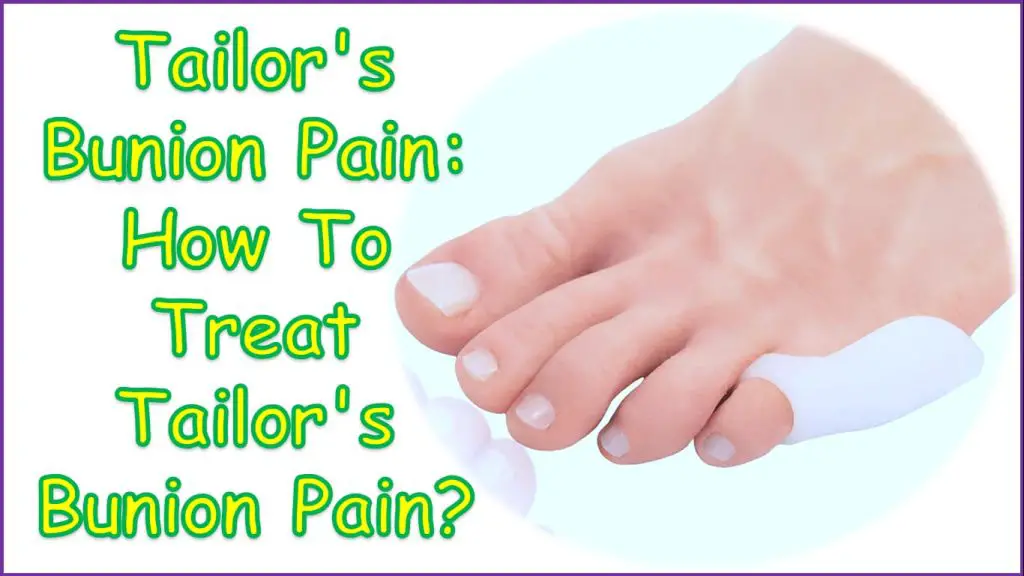Tailor’s bunion pain is a malady that nearly all of us have encountered in our lives. Nevertheless, not all pain in the foot is the same. This condition is a form of pain, known as bunionette, which affects the fifth metatarsal bone of the foot, situated at the base of the little toe. This condition can be extremely uncomfortable and significantly lower the quality of life. In this treatise, we will scrutinize the genesis, signs, and potential cures for tailor’s bunion pain.
Etiology of Tailor’s Bunion Pain
Various factors cause tailor’s bunion pain. The most prevalent origin of this ailment is wearing tight-fitting shoes or high heels. These shoes cause the fifth metatarsal bone to experience pressure, resulting in swelling and pain. Genetic predisposition, foot injuries, and foot deformities are other causes of tailor’s bunion pain.
Manifestations of Tailor’s Bunion Pain
The signs of tailor’s bunion pain are not hard to identify. They involve:
- Swelling and pain at the base of the little toe
- Inflammation and redness
- Corns or calluses on the affected area
- Challenges in wearing shoes or walking
- The impacted toe has a limited range of motion
Potential Solutions for Tailor’s Bunion Pain
There are numerous solutions available for those afflicted with tailor’s bunion pain. The first step is to change your shoes. Wearing shoes with a broader toe box can alleviate pressure on the affected area. Furthermore, using shoe inserts or customized orthotics can provide additional padding and support for your feet.
In some cases, over-the-counter pain relievers, like ibuprofen or acetaminophen, can help alleviate pain and reduce inflammation. However, if the discomfort is severe or persistent, it is advisable to seek medical attention. A doctor may prescribe corticosteroid injections to reduce inflammation or recommend surgery in extreme cases.
Preventing Tailor’s Bunion Pain
Preventing tailor’s bunion pain is possible through some precautions. These precautions include:
- Wearing shoes with a broader toe box
- Abstaining from wearing high heels or tight shoes
- Keeping a healthy weight
- Regularly stretching and exercising your feet
Conclusion
Tailor’s bunion pain is a common foot condition that can cause considerable discomfort and agony. Understanding the genesis, signs, and potential treatments for this condition is critical for preserving healthy feet. By taking preventive measures and seeking medical attention when required, you can alleviate the pain and agony associated with tailor’s bunion pain.
FAQs [Tailor’s Bunion Pain]
What are some home remedies for relieving Tailor’s Bunion pain?
Some home remedies include wearing shoes with a wider toe box, avoiding high heels or tight shoes, using ice packs to reduce inflammation, taking over-the-counter pain medications, and elevating the affected foot.
Tailor’s bunion nerve pain: Can Tailor’s Bunion cause nerve pain?
Yes, Tailor’s Bunion can cause nerve pain in some cases. The pressure from the inflamed joint can irritate the nerves and cause pain.
How can I relieve nerve pain caused by Tailor’s Bunion? how to relieve pain from tailor’s bunion?
Relieving nerve pain caused by Tailor’s Bunion may involve a combination of treatments such as taking anti-inflammatory medications, using orthotic devices, and getting corticosteroid injections. Surgery may also be an option in severe cases.
How long does it take for Tailor’s Bunion pain to go away?
The duration of Tailor’s Bunion pain can vary depending on the severity of the condition and the treatment options used. Mild cases of Tailor’s Bunion pain may go away on their own or with basic treatments such as wearing wider shoes, while more severe cases may require medical intervention and take longer to heal.
Can Tailor’s Bunion pain be prevented?
Yes, Tailor’s Bunion pain can be prevented by taking some precautions such as wearing comfortable shoes with a wider toe box, avoiding high heels or tight shoes, maintaining a healthy weight, and stretching and exercising the feet regularly.
We hope that this article on Tailor’s Bunion Pain has been informative and helpful for you. If you found this article useful, please do not hesitate to share it with your friends and family who may also be suffering from this condition. Sharing is caring, and your support can help others find the relief they need.
Additionally, we would love to hear your thoughts and feedback on this article. If you have any comments, questions, or suggestions, please feel free to leave a comment below. Your feedback is essential to us as we strive to provide high-quality content that meets the needs of our readers.
Thank you for reading, and we look forward to hearing from you!
See Also:
- Bunion Pain Relief Cream
- Surgery on Bunionette
- Best Shoe Brands for Bunions
- Early Stage Pinky Toe Bunions
- Best Slides for Bunions
- Best Clogs for Bunions
- Best Slippers for Bunions and Corns
- Best Flats for Bunions
- Bunion Massage
- Best Stretchy Shoes for Bunions
- Best Slip On Shoes for Bunions
- Compression Socks for Bunions
- Best Ice Pack for Bunion Surgery
- Tailor’s Bunion Symptoms, Causes, Treatment

Leave a Reply